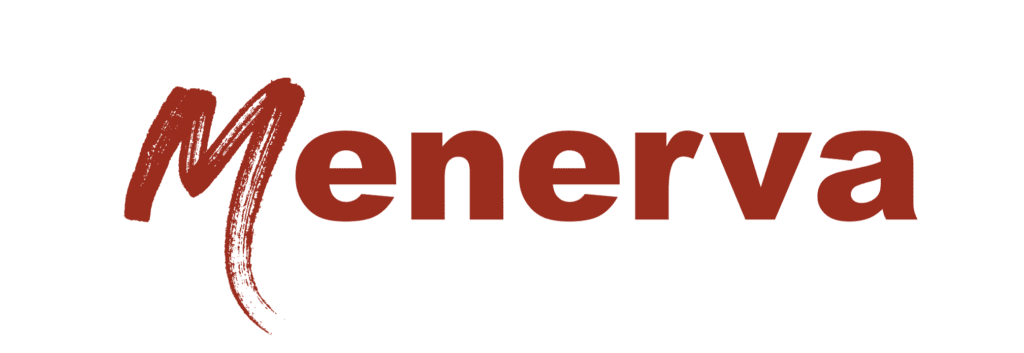In today’s digital age, understanding your competitors is more crucial than ever. This is especially true regarding SEO, where your competition can directly influence your visibility, traffic, and conversions. In this guide, we’ll delve deep into the process of competitor analysis, ensuring you emerge with helpful insights to elevate your SEO game.
What Is Competitor Analysis?
An SEO competitor analysis is the process of examining and understanding your competitors’ search engine optimization strategies and tactics. This includes evaluating their website structure, content, backlink profiles, keyword rankings, technical aspects, and more. The objective is to identify their strengths and weaknesses to uncover potential opportunities and threats within your own SEO strategy – all in an effort to improve your online visibility and ranking in search engine results.
Why Is a Competitor Analysis Important for SEO?
SEO is about getting your content in front of the right eyes. To do this effectively, you need to know what your competitors are doing. Are they ranking higher than you? Why? What can you learn from them? Can you do it better than them? Performing a robust competitor analysis can answer all these questions and more.
The End-Goal
The ultimate objective of an SEO competitive analysis is to uncover avenues that position you a step ahead of your rivals. By leveraging your competitors’ weak points and refining your own areas of improvement, you pave the way to stand out and surpass the competition.
Competitor Analysis Steps
Identify Your SEO Competitors
First things first, you need to know who you’re up against. But remember: not all business competitors are your SEO competitors. While some brands compete with you directly in products or services, you also compete with entirely different entities on Google that you might never have considered.
Direct vs. SEO Competitors
Your direct competitors offer similar products or services in your market segment. But when it comes to SEO, your competitors include any website or content that ranks for the same keywords as you. For instance, a personal finance blog might compete with news sites, banks, or forums in the search results, even though these entities have very different business models.
How to Find Them
Using tools like SEMRush, Ahrefs, or Moz, you can identify which sites rank for your same keywords, giving a clearer picture of your actual SEO competition. For this example, we’re going to use SEMrush.
Open the Organic Research tool, enter your domain, and hit “search.”

Scroll to the bottom under the Main Organic Competitors section. This section will show the websites competing with you for the same keywords.

This is a great starting point because it takes the guesswork out of figuring out your SERP or SEO competitors.
Analyze the Keywords Bringing Them Traffic
Once you’ve identified your competitors, the next step is understanding where their traffic comes from and with which keywords. Platforms like Ahrefs and SEMRush can offer insights into their traffic sources and the organic keywords they’re ranking for. Just like the earlier method, input your competitor’s domain into SEMrush. Then, navigate to the “Top Organic Keywords” section to discover the keywords they rank for, their respective positions, and the associated pages.

Find Keyword Gaps and Opportunities
Are your competitors discussing topics that you aren’t? If so, these are content gaps you need to fill. Tools like SEMrush’s Keyword Gap tool can highlight these gaps, allowing you to create content that might be missing from your current strategy.
First, enter your domain alongside competitors and hit “compare.”

Navigate to “All keyword details” and select the “missing” tab to identify keywords your competitors rank for that you don’t. However, be aware that there could be valid reasons for this disparity. For example, you might not provide the specific product, service, or brand they do.
Examine each keyword closely to determine how to close the “gap.” Oftentimes, this exercise will lead you to create new pages tailored to these keywords. However, if suitable pages already exist on your site, prioritize enhancing their keyword focus. We’ll delve deeper into this aspect shortly.
Analyze On-Page Strengths and Weaknesses
A core aspect of SEO competitor analysis lies in understanding your competitors’ on-page strategies. This refers to the methods they use on their website and individual pages to ensure they are favorable to search engines. By analyzing these on-page strengths and weaknesses, you gain valuable insights into what they’re doing right, where they might be missing the mark, and where you can potentially outshine them.
Content Publishing Patterns
Determine how often your competitors are updating their websites. Are they posting new blogs weekly? Updating product pages or creating fresh landing pages regularly? A consistent publishing schedule indicates a committed content strategy.
Understand the type of content they are publishing. From long-form articles, infographics, videos, and podcasts to interactive tools, understanding the types of content they prioritize provides insights into what their audience (and perhaps yours) values.
Content Optimization
Consider how they leverage keywords throughout their content. Are they naturally integrated, or do they seem forced? Understanding their keyword strategy can shed light on their SEO goals.
Delve into their meta titles and descriptions. These play a crucial role in click-through rates from search engine results pages. Are they compelling, clear, and well-optimized? If not, can you do better?
Headlines can make or break content. Analyze their headlines for insights into their strategy. Are they using numbers, emotional triggers, or questions to engage readers?
Content Organization
How is their content organized? A well-structured site with seamless navigation not only enhances user experience but also helps search engines to index.
Pay attention to how they link internally. A robust internal linking structure can boost page views and improve site authority.
Are they skimming the surface of topics, or do they provide in-depth, comprehensive insights? Deep dives into subjects can position brands as thought leaders in their niche.
Special Considerations
While the points mentioned above are integral to on-page SEO, don’t forget to look for unique strategies or experimental tactics they might be trying. This could be anything from unique interactive elements to chatbots or innovative call-to-action placements.
Review Backlink Profiles
In the intricate world of SEO, if your content forms the body of your online presence, backlinks are its lifeblood. Understanding not just your own but also your competitors’ backlink profiles can offer game-changing insights for your SEO strategy.
Dissecting your competitors’ link profiles allows you to uncover sources that deem their content worthy of a link. By analyzing these sources, you gain insights into their backlink strategies and identify potential avenues for your own outreach and link-building efforts. For instance, when a site links to your competitors, there’s a good chance they might be interested in your content as well, and it may make sense to request a backlink from them.
Using SEMrush’s Backlink Gap tool will help you identify opportunities.
Technical Analysis
Beyond content and backlinks, a robust competitor analysis should also delve into the technicalities of their online presence. A website’s technical performance directly impacts its search engine rankings, user experience, and overall efficiency. Here’s what you should focus on when conducting a technical analysis of your competitors.
User Experience (UX)
An intuitive and straightforward navigation structure decreases bounce rates and heightens user engagement. Ask this critical question: Is it easy for users to find what they’re looking for? Similarly, the site’s design is pivotal in fostering trust and retaining users. A modern and appealing look can significantly impact a visitor’s perception and experience on the website. Knowing what your competitors do right (or wrong) in UX design can directly inform improvements on your site to capture and retain more visitors.
URL Structure
URLs that are both concise and descriptive offer better user experience and SEO value. For instance, website.com/seo-guide speaks more to users than website.com/article12345. Moreover, maintaining a uniform URL structure across various content types like product pages or blog posts ensures easier site navigation and understanding. By analyzing competitors’ URL strategies, you can adapt best practices and avoid pitfalls, ensuring your site remains user-friendly and easily indexed by search engines.
Mobile Responsiveness
In today’s digital age, many users access websites via mobile devices. Hence, it’s imperative to check: Does the site appear and function optimally on mobile? Given the on-the-go nature of mobile users, speedy page loading becomes even more crucial. Observing their mobile strategies provides a benchmark for enhancing your site’s mobile experience, ensuring you don’t miss out on this vast user base.
Schema Markup
Schema markup can significantly enhance understanding of how search engines comprehend and present content in search results. Does the competitor utilize schema for content types like products or reviews? Proper implementation often results in rich snippets, offering enhanced details like ratings or product information right on the search page. By studying competitors’ use of schema, you can identify opportunities to better structure your own content for search engines, potentially gaining an edge in search results with richer snippets. Use Google’s Structured Data Testing tool to find out the type of markup they are using and whether they are using it properly.
Page Speed
Page loading speed directly impacts user satisfaction and search engine ranking. Utilizing tools like Google’s PageSpeed Insights provides information about a site’s loading time. It’s worth noting how your competitors manage optimization aspects, such as image compression and script minimization. Analyzing the loading speed of competitor sites provides insights into industry standards so that you can implement necessary optimizations to ensure your site remains competitive and user-friendly.
Understanding your competitors’ technical strategies not only helps in identifying industry benchmarks but also uncovers areas of improvement for your site, ensuring you remain competitive and deliver an optimized user experience.
In the digital landscape, keeping abreast of your competitors’ strategies is essential, but acting on those insights is what truly sets you apart. If you want to leverage expertly executed SEO strategies, consider partnering with Menerva Digital’s enterprise SEO services. Our dedicated team dives deep into the intricate layers of SEO, ensuring your brand not only stays ahead of the competition but also thrives and grows. Don’t leave your digital potential untapped; let Menerva Digital guide you to the pinnacle of online success. Reach out today and embark on an unmatched SEO journey!





